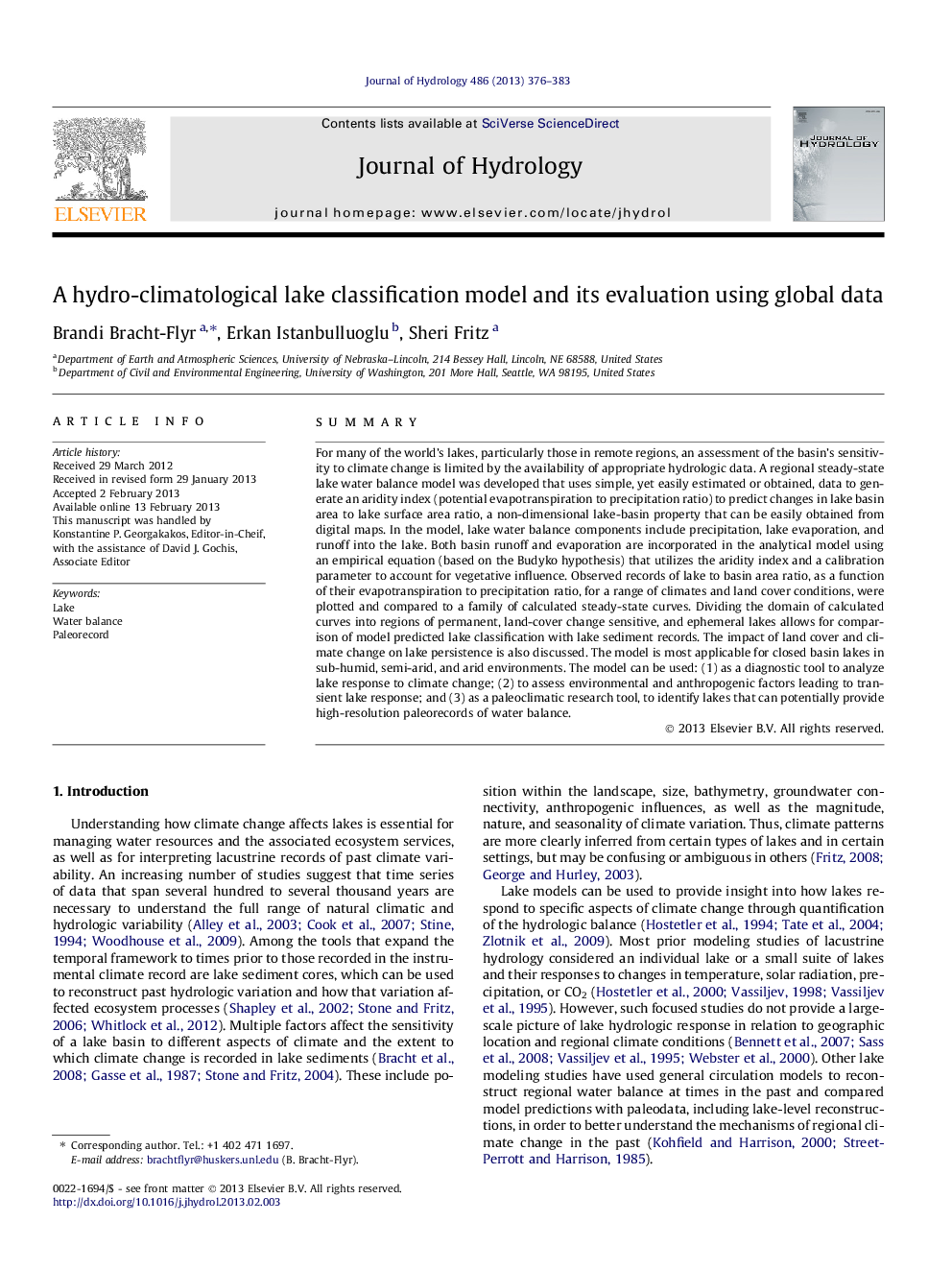| کد مقاله | کد نشریه | سال انتشار | مقاله انگلیسی | نسخه تمام متن |
|---|---|---|---|---|
| 4576405 | 1629962 | 2013 | 8 صفحه PDF | دانلود رایگان |

SummaryFor many of the world’s lakes, particularly those in remote regions, an assessment of the basin’s sensitivity to climate change is limited by the availability of appropriate hydrologic data. A regional steady-state lake water balance model was developed that uses simple, yet easily estimated or obtained, data to generate an aridity index (potential evapotranspiration to precipitation ratio) to predict changes in lake basin area to lake surface area ratio, a non-dimensional lake-basin property that can be easily obtained from digital maps. In the model, lake water balance components include precipitation, lake evaporation, and runoff into the lake. Both basin runoff and evaporation are incorporated in the analytical model using an empirical equation (based on the Budyko hypothesis) that utilizes the aridity index and a calibration parameter to account for vegetative influence. Observed records of lake to basin area ratio, as a function of their evapotranspiration to precipitation ratio, for a range of climates and land cover conditions, were plotted and compared to a family of calculated steady-state curves. Dividing the domain of calculated curves into regions of permanent, land-cover change sensitive, and ephemeral lakes allows for comparison of model predicted lake classification with lake sediment records. The impact of land cover and climate change on lake persistence is also discussed. The model is most applicable for closed basin lakes in sub-humid, semi-arid, and arid environments. The model can be used: (1) as a diagnostic tool to analyze lake response to climate change; (2) to assess environmental and anthropogenic factors leading to transient lake response; and (3) as a paleoclimatic research tool, to identify lakes that can potentially provide high-resolution paleorecords of water balance.
► We developed a climatic lake classification approach based on lake water balance.
► Our approach predicts lake to basin area ratio as a function of aridity index.
► The method can be used to examine the role of climate and land-use change on lakes.
► The model utilizes a free parameter to incorporate the impact of basin vegetation.
► The model can help identify lakes that produce highly resolved lake-level records.
Journal: Journal of Hydrology - Volume 486, 12 April 2013, Pages 376–383